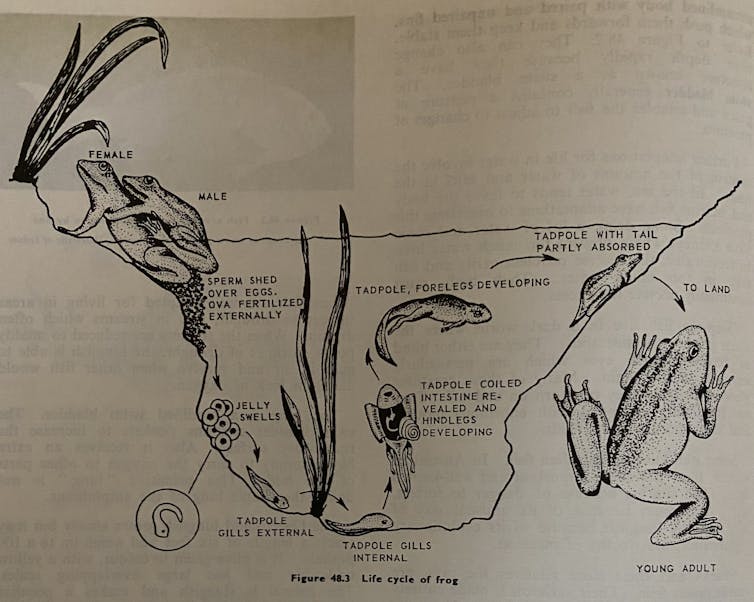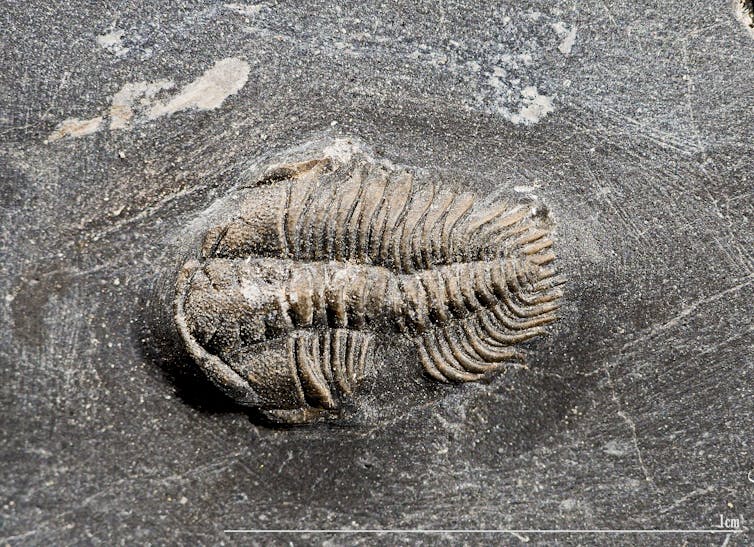Republished from The Conversation
As you read this, scientists the world over are rushing to find out more about the COVID-19 Omicron variant.
Indeed, if there’s anything the pandemic has made clear, it’s that the importance of scientific research can’t be understated in today’s world.
As we embark on a new year, hopefully with more progress on the COVID-19 front, six authors of The Conversation reflect on what first sparked their interest in science.
Cathy Foley
Australia’s Chief Scientist
It was my brothers’ high-school textbooks, I kid you not! I loved poring over the Harry Messel textbooks as a 10- or 11-year-old. They were beautifully illustrated, with nature drawings and detailed experiments set out in a visual format. And I’ll never forget the photo of a dissected rat.
Then when I got to years 11 and 12 at school, the six-volume Harvard Project Physics sold me completely. It has a strong historical narrative, which is unusual in a science textbook and really worked for me.
I still have both sets of textbooks on the bookshelf in my home office. But even though I wanted to be a scientist from a young age, I didn’t know it was open to me so I didn’t dare express it. That final step only came in third-year experimental physics, when I discovered new properties of liquid crystals no one had found before. There was no going back.

Reproduced courtesy of the University of Sydney
Bronwyn Carlson
Professor of Indigenous Studies and Director of The Centre for Global Indigenous Futures, Macquarie University
In 2008 I made my first Facebook post. I was in the middle of a PhD, conducting interviews with Aboriginal people about their identity and involvement in the Aboriginal community. Several spoke about how they expressed their Aboriginality on Facebook, by sharing images and forming connections.
This piqued my interest; Facebook was still new, having opened to the public just two years prior. I hadn’t considered issues of identity or community in these still-novel digital settings. Back then, people tended to separate life into the offline “real” world and the online “virtual” world – which by implication was not “real”.
I became interested in whether being Aboriginal online attracted the same sort of scrutiny as Aboriginal people regularly experienced offline. It turned out those with Facebook profiles experienced high levels of surveillance around their identity. I guess regardless of being online or offline, being Indigenous can attract violent behaviour from settlers.
Sara Webb
Postdoctoral Research Fellow at the Centre for Astrophysics and Supercomputing, Swinburne University of Technology
I have always been curious about the world and universe we live in. As a child I remember catching my poor mum off-guard, at 7.30am mind you, with the questions: “why do we exist?” and “What was there before the universe?”
It was a lot for 8-year-old me to be contemplating. But after watching all the Discovery Channel, National Geographic and History Channel documentaries I could possibly get my hands on, my mind was constantly in awe of such questions.
I genuinely can’t remember a time I haven’t been fascinated with the wonders of life. Learning physics in high school was the pinnacle of me beginning to understand why the universe is the way it is. This passion led me to where I am today – an astrophysicist and data scientist trying to make sense of the universe (and other things) via observations and data analysis.
Russell D.C. Bicknell
Postdoctoral Researcher in Palaeobiology, University of New England
When I was about five years old, my father showed me the fossil of an extinct animal called a trilobite: ancient organisms that lived within even older oceans. They evolved long before the dinosaurs, and had gone extinct just before the first of the giant vertebrates (animals that have a backbone).
In doing so, my father had introduced me to the record of organisms that were no longer alive – and furthermore, that people who studied these animals are called palaeontologists. From this point on, I was motivated to understand more about these extinct groups.
This led me down the road of studying evolution, ultimately resulting in me becoming an evolutionary palaeontologist. Now, rather true to my childhood origins, I regularly study trilobites and am interested in documenting many different aspects of arthropod evolution.

Didier Descouens/Wikimedia Commons, CC BY-SA
Jenny Graves
Distinguished Professor of Genetics and Vice-Chancellor’s Fellow, La Trobe University
I was a scientist for 20 years before I defined myself as “a scientist”. I was many things: harried lecturer, canny grant-seeker, cynical academic, chameleon mother and wife of shire president.
The event that stopped everything, and focused my attention on science, was a near-fatal brain bleed when I was 50 – followed by life-saving neurosurgery and an 18-month recuperation. During my rehabilitation, a kind visitor remarked comfortingly, “Now you have the space to decide what you really want to do with your life!”
I was overwhelmed by the realisation that what I really wanted to do was at the core of what I had been doing for 20 years: science! Just more, and better, with commitment and immersion.
Yvonne Wong
Associate Professor of Physics, University of New South Wales
The American physicist Sidney Coleman once said:
The career of a young theoretical physicist consists of treating the harmonic oscillator in ever-increasing levels of abstraction.
My journey into theoretical physics indeed began with a harmonic oscillator: the pendulum. Specifically, the formula relating the period of a pendulum’s swing (T) to its length (l) and gravity (g), which I found in a textbook at the age of about 15:
T = 2π√(l/g)
I was always good at maths. I also liked the idea that a set of universal principles governs all natural phenomena. But to see the latter expressed in terms of the former so cleanly was an epiphany.
I spent many hours pondering the 2π and the square root. More obsessions followed, from plucked violin strings to nuclear fission.
But what sealed it in the end was Douglas Giancoli’s textbook Physics: Principles with Applications, which I came across at about age 16. The last two chapters were on “Elementary Particles” and “Astrophysics and Cosmology”. The rest is history.![]()
Author information
Michael Hopkin, Deputy Chief of Staff, The Conversation; Michael Lucy, Deputy Editor: Science + Technology, The Conversation, and Noor Gillani, Deputy Editor: Science + Technology, The Conversation
This article is republished from The Conversation under a Creative Commons license. Read the original article.

